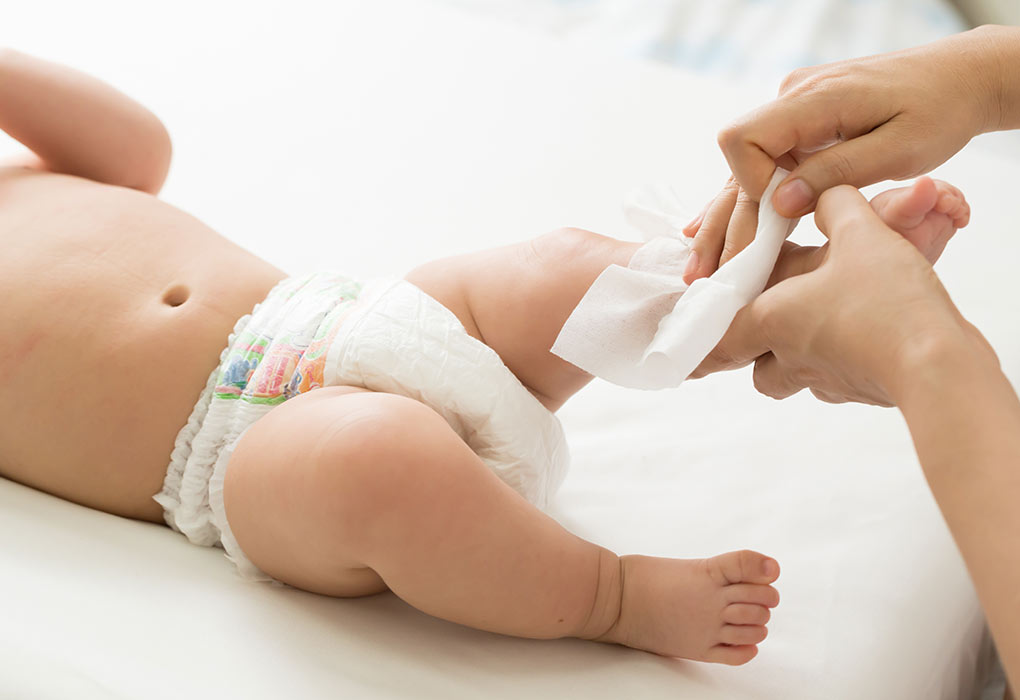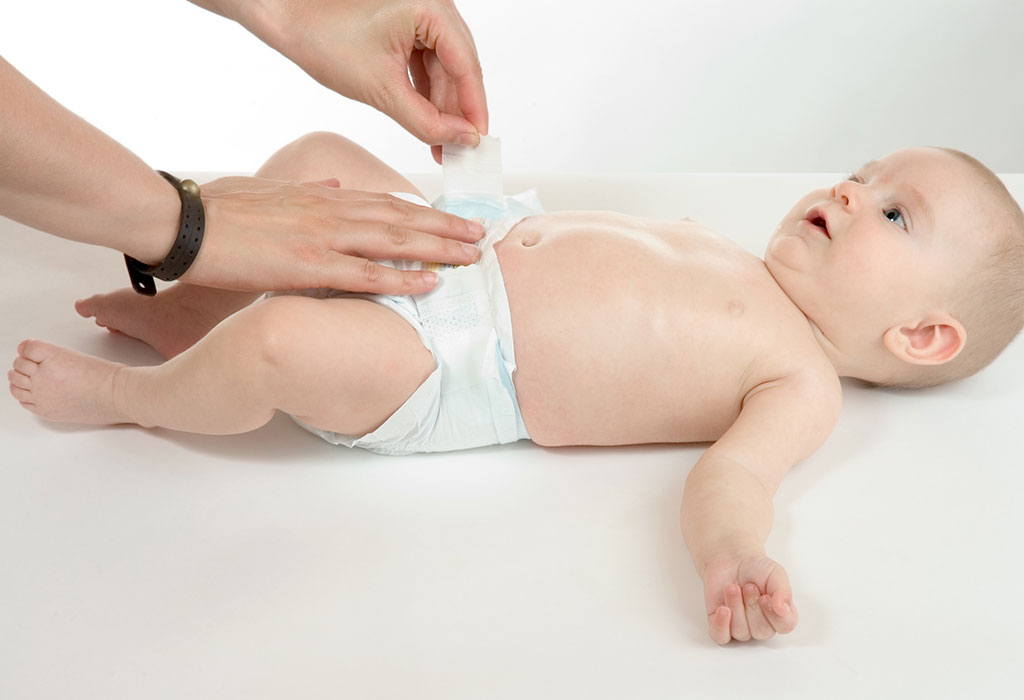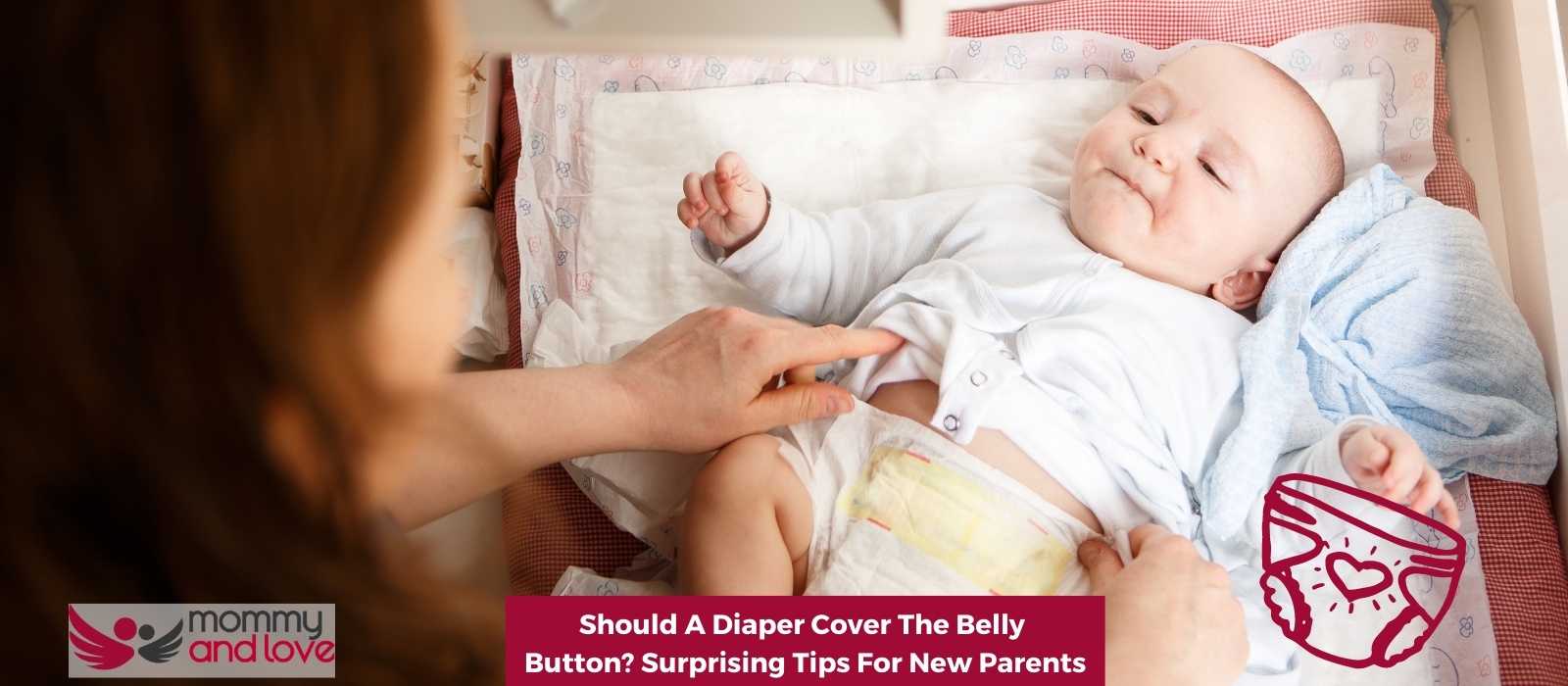As a new parent, there are so many things to worry about – from whether or not your baby is getting enough to eat, to how much they’re sleeping.
One question that might be on your mind is whether or not you should be covering your baby’s belly button while using diapers.
In this blog post, we will explore the surprising tips for new parents when it comes to diapering!

Where Should a Baby’s Diaper Fit to?
Mostly babies must be diapered to cover the belly button with the diaper waistband to provide a proper fit.
However, when it comes to newborn babies especially those who still have umbilical cord stumps must be diapered keeping the waistband placed below their belly button to let their umbilical cord stump heal and remain dry – some newborns diapers even come with a gap cut out to help to heal the umbilical cord.
Read this article for more info on how to pick the perfect diaper, when you can diaper your infant by covering their belly button & when you shouldn’t.
How To Pick The Perfect Diaper For You Baby?
There are so many different types and brands of diapers on the market these days, it can be hard to know where to start when you’re trying to choose the perfect ones for your baby. But don’t worry, we’re here to help! Here are a few things to keep in mind when you’re diaper shopping:
Right Fit
You should check the guidelines given for each size. Otherwise, you’ll end up choosing the irritated diaper for your newborn.
In case your infant is lean in their legs you will have to get bigger or smaller size accordingly. It shouldn’t be too loose or too tight. You can try different diaper sizes depending on your baby’s body and fit.
A disposable diaper needs to fit snugly enough, especially with breastfed baby’s poop, to prevent any diaper blowouts. However, if a diaper is too tight, this can cause friction and nappy rash. When a diaper fits snugly then these issues are reduced and diapers leak are reduced.
Cloth diapers are also fitted completely differently. You need to ensure when fitting the diaper that no absorbent material is poking through and if you can fit more than two fingers around the edge when changing into a fresh diaper, then it is too loose.
Cloth diapers tend to sit below the stomach line, wherease disposable diapers tend to sit on the baby’s stomach and below one’s belly button. If you are using cloth diapers, then its worth checking on this, and read our guide to getting a proper diaper fit.
Features
It seems every day that a new type of feature is released on modern diapers.
Newborn diapers often have a gap at the top to let the newborn’s umbilical stump air dry. It’s there to prevent an infections on the umbilical stump thather than seeing their adorable belly button!
If you are suffering from frequent blowouts (common in the first few weeks), then you may need to change brand or style of diaper.
Comfort
In case you find that after changing the diaper often your baby is getting rashes repeatedly, you may have to change the size or brand as the fit isn’t right or the quality of the diaper might not be as good as your baby’s requirement. Never compromise with your baby’s comfort.
Pick The Perfect Baby’s Diaper Size
The below chart is a fantastic guide to assisting you to pick a baby’s diaper size depending on your baby’s stage and weight, but you will also have to check for indicative signs of an imperfect fit as soon as your infant is wearing them. We’ve done a detailed guide to the diaper sizes here.
Red marks, persistent leaks, on the baby’s legs, or gaps are symptoms of wrong diaper fits. In case your child is approaching the peak of the weight range, it might be time to think about moving a size up. Here is the average list of baby’s diaper size
List of Baby Diaper Sizes by Weight:
Newborn diapers Size:
Up to 10 pounds
Size 1:
8 to 14 pounds
Size 2:
12 to 18 pounds
Size 3:
16 to 21 pounds
Size 4:
20 to 32 pounds
Size 5:
27 to 35 pounds
Size 6:
More than 35 pounds
Are Diapers Supposed To Cover The Baby’s Belly Button Or Not?
Should a diaper cover a baby’s belly button or not that depends on facts like if they still have their umbilical cord stump or is it healed.
In case your child is a newborn who still has an umbilical cord stump, then their diaper shouldn’t cover the belly button whatsoever, but in case your child is older and doesn’t have an umbilical cord stump, then you can cover the belly button so that the diaper fits snuggly.
In case the diaper is not placed perfectly or does not properly fitting diaper, or is too tight diaper it may cause extreme leaks.
Right Diaper Fit After Your Baby’s Umbilical Cord Is Healed Completely

As soon as your newborn baby’s umbilical cord stump has completely dried up as well as fallen off, you can start to diaper the baby to cover his or her belly button using either disposable diapers or cloth diapers, no longer needing notch cutout diapers.
This’s the perfect time for a diaper fit assessment, as you’ll need to ensure your baby’s diaper is big enough to fit over your baby’s belly button while still protecting your baby’s bottom but not too tight to make your baby feel uncomfortable.
A baby diaper is a right fit in case the leg cuffs and waistband fit snuggly, however, with room for 2 fingers underneath. This won’t leave red marks or cause skin irritation on your baby’s body.
How To Know If Diaper Is Too Small For Your Baby?
A too-tight diaper will make your baby uncomfortable and it may also cause a rash on your baby’s body. So, you need to make sure that your baby’s diaper is not too tight. Following are the signs that show your baby’s diaper is too small and too tight.
Straps Are Too Hard to Attach
In case you are using a regular fit diaper for your baby but you are not able to meet the two ends meet then it is too small and thus, you need to size up your baby’s diaper.
Red Marks or Rashes
In case your baby’s waist, groin, or hips areas are having red marks and rashes on your baby’s skin as soon as you remove the diaper, then your baby certainly needs to have a larger size.
Tight Waistband
If you can’t fit your 2 figures in the waistband area when you stretch them then it is too small for your baby. It suggests that you need to size up to a bigger diaper.
How To Know If Diaper Is Too Big For Your Baby?
below are the signs that show you need to buy a smaller diaper than the one you are using right now
Waistband Fit Is Loose
The waistband should fit snugly to that pee and the poopy diaper does not leak. Unless you stretch the waistband, it shouldn’t have gaps.
Too Big Leg Opening
When you put on the diaper, check if there is any gap in the leg area. If you see any gaps then it is too big for your baby.
Hangs Too Low
When you see the diaper is sagging even when it isn’t full, then that is a clear indication the diaper is big for your baby. Bigger diapers can cause issues as they are more likely to leak if your baby has a bowel movement. Getting the diapers fit right is important!
BOTTOM LINE
Thankfully, there is a lower chance of anything going wrong with the newborn’s belly button. All you need to do is to keep the belly button dry & clean, do not cover the area until the cord dries up and you need to let nature do the rest. Remove a dirty diaper and wet diapers to avoid diaper rashes.
These above-mentioned tricks and tips are guidelines, however, being a parent, you should trust your intuition too. No one knows your baby better than you do. So, follow the guideline and listen to your first instinct!

This article was written by: Gian MIller – Full-Time Writer, Baby Whisperer & Dad of 3.
Gian spends a lot of his time writing. A self-proclaimed baby whisperer, Gian has been through it all with his own children and is passionate about sharing his hard-won wisdom with other parents. When he’s not writing or changing diapers, you can find him playing the guitar or watching baseball (or preferably both at the same time).




